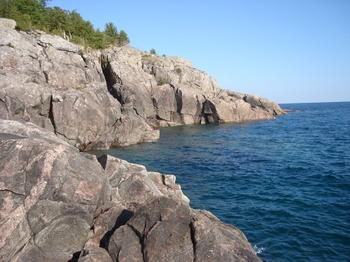Habitat
Vertigo paradoxa is most commonly a forest species that tends to prefers soils with a thick organic layer (Nekola, 2003). It is hard to distinguish between habitats that the Mystery Vertigo may prefer, select or require because this species has not been studied extensively (Anderson, 2004).
In four different habitats in northwestern Minnesota,
Nekola has found the Vertigo paradoxa; these
habitats were: white cedar wetland, balsam white spruce forest,
black ash wetland and tamarack wetland (Anderson,
2004). Nekola found the highest densities of Mystery Vertigo
in the white cedar wetland habitat (Anderson,
2004). This habitat was described by Nekola as being a
lowland forest with deep litter and cooler soil that contained
white cedar, black spruce, and tamarack (Anderson,
2004).
White Cedar Swamp at Great
Dismal Swamp National Wildlife Refuge.
Credit: Fish & Wildlife Service
The Mystery Vertigo snail has been found in many different habitat types in Michigan (Sterki, 2007). Some of these habitat types include carbonate or limestone cliffs, tamarack wetlands and rocky woodlands (Sterki, 2007). In Michigan, Vertigo paradoxa was most commonly found in the eastern Upper Peninsula on carbonate rocks and near Lake Superior on basalt rocks (Sterki, 2007). In the places were Vertigo paradoxa was found in Michigan, the land was mostly treeless with very little soil development (Sterki, 2007).
Distribution - Home - Nutrition

